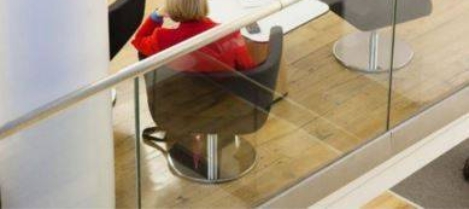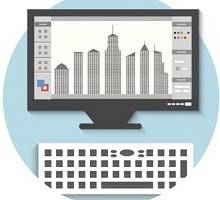March 3, 2016
Open plan offices linked to low engagement and workplace satisfaction levels 0
 As we’ve pointed out before, while open plan working can bring cultural benefits such as improved communication and collaboration; the continuing popularity of the open plan office is largely down to cost. The reason the UK has more than twice as many open plan workers as the global average is primarily due to high real estate costs. Now a new report from Steelcase suggests that space and cost-saving strategies such as open plan offices and hot-desking could be impacting workplace satisfaction and engagement. UK employees are falling below the global average for almost all workplace satisfaction metrics, reporting a lack of control over their work environment (59 percent), difficulties concentrating (43 percent) and an inability to work without being interrupted (50 percent). These three factors were found to be central to fostering an engaged and satisfied workforce. Only 29 percent of UK workers are engaged, compared to 34 percent globally.
As we’ve pointed out before, while open plan working can bring cultural benefits such as improved communication and collaboration; the continuing popularity of the open plan office is largely down to cost. The reason the UK has more than twice as many open plan workers as the global average is primarily due to high real estate costs. Now a new report from Steelcase suggests that space and cost-saving strategies such as open plan offices and hot-desking could be impacting workplace satisfaction and engagement. UK employees are falling below the global average for almost all workplace satisfaction metrics, reporting a lack of control over their work environment (59 percent), difficulties concentrating (43 percent) and an inability to work without being interrupted (50 percent). These three factors were found to be central to fostering an engaged and satisfied workforce. Only 29 percent of UK workers are engaged, compared to 34 percent globally.



































March 8, 2016
Classrooms are starting to mimic the form and function of the office 0
by Tricia McCall • Comment, Technology, Workplace design
Technology is not the only factor impacting the way education is being approached in the classrooms of today. While it’s true that many classrooms have begun to adapt to the inclusion of technology in the curriculum, there are also several “offline” options which have clearly trickled down from business design. Globally known companies such as Google and Apple have long been getting attention for the offbeat office culture they are cultivating. This trend has been fanning out into the other companies and industries as well. In-house chefs, rock climbing walls, and unconventional meeting spaces are a few of the unusual features popping up in offices all over the globe. Employers are striving to entice potential job candidates and retain their existing employees through unique and engaging environments. It may well be that the bells have already tolled for the conventional cubicle culture of the past.
(more…)